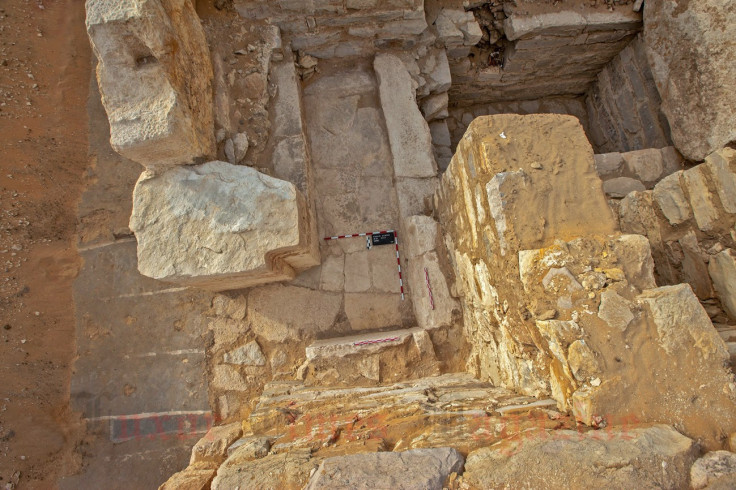4,500-year-old tomb of unknown Egyptian queen Khentkaus III discovered near Cairo

Czech archaeologists have discovered the tomb of a 5th Dynasty Egyptian queen whose name was previously unknown, the Egyptian Minister of Antiquities announced on Sunday.
The queen's name is Khentkaus III (or Khentakawess III), according to the name and ranks of "Wife of King" and "Mother of King" inscribed on the walls of her tomb, and she is believed to be the wife of Pharaoh Neferefre, who reigned for just two years from 2460-2458BC.
"For the first time we have discovered the name of this queen who had been unknown before the discovery of her tomb," Antiquities Minister Mamdouh al-Damaty said in a statement.
"This discovery will help us shed light on certain unknown aspects of the Fifth Dynasty, which along with the Fourth Dynasty, witnessed the construction of the first pyramids."
The tomb was discovered at Abu Sir, an ancient necropolis located near Cairo that houses royalty and nobility from the Old Kingdom period (2686–2181 BC).
Once the neighbouring site of Giza became too full of pyramids and other funerary monuments in the 4<sup>th Dynasty, monarchs began constructing their tombs in Abu Sir instead.

In their excavations, the Czech Institute of Egyptology discovered four copper tools and 23 limestone pots, which are part of the funerary goods buried with the queen.
"The tomb is very similar to the rest of the burials in the cemetery which were unearthed by the Czech mission in the 1990s," said Kamal Wahid, Giza Antiquities director, according to Luxor Times.
On entering the tomb, the upper chamber is a mastaba, i.e. an Egyptian tomb constructed from mud bricks or stone that has a rectangular structure with outwardly sloping sides and a flat roof.
There is a shaft that leads to the lower level of the tomb, and this floor holds a burial chamber and a small chapel for offerings to the gods.
Unfortunately, Khentkaus III's mummy is nowhere to be found, either due to looting in ancient times, or from being moved by priests in antiquity to prevent her body from being destroyed.
However, information from the tomb fills in gaps in current knowledge of the 5<sup>th Dynasty, particularly of Pharaoh Menkauhor Kaiu (supposedly 2421-2414BC), whose reign is shrouded in mystery as hardly anything from his reign has survived till today.

Dr Jaromir Krejci, a team member of the Czech Institute of Egyptology mission said: "The title of the Mother of the King discovered in the tomb is of historical importance."
"If we can assume that the Queen was buried during the time of King Nyuserre (2445-2421 BC) based on a seal bearing his name that was found on the tomb, then we could say that Khentkaus III is the mother of King Menkauhor who was the successor of Nyuserre.
"This could also reveal more information on this King especially since we have very little information on him."
© Copyright IBTimes 2025. All rights reserved.






















